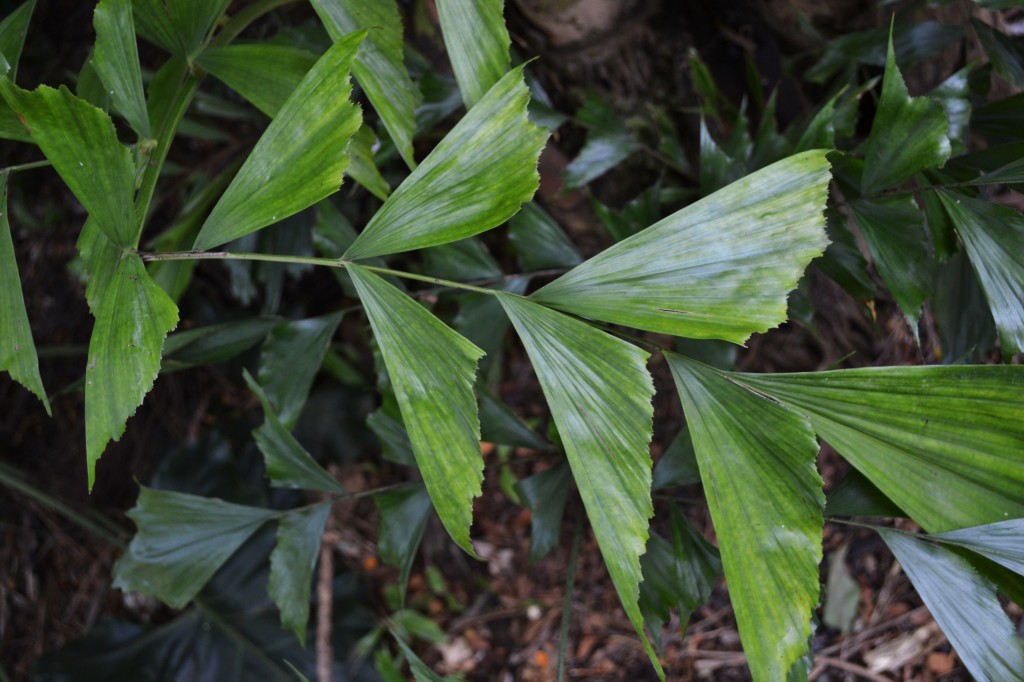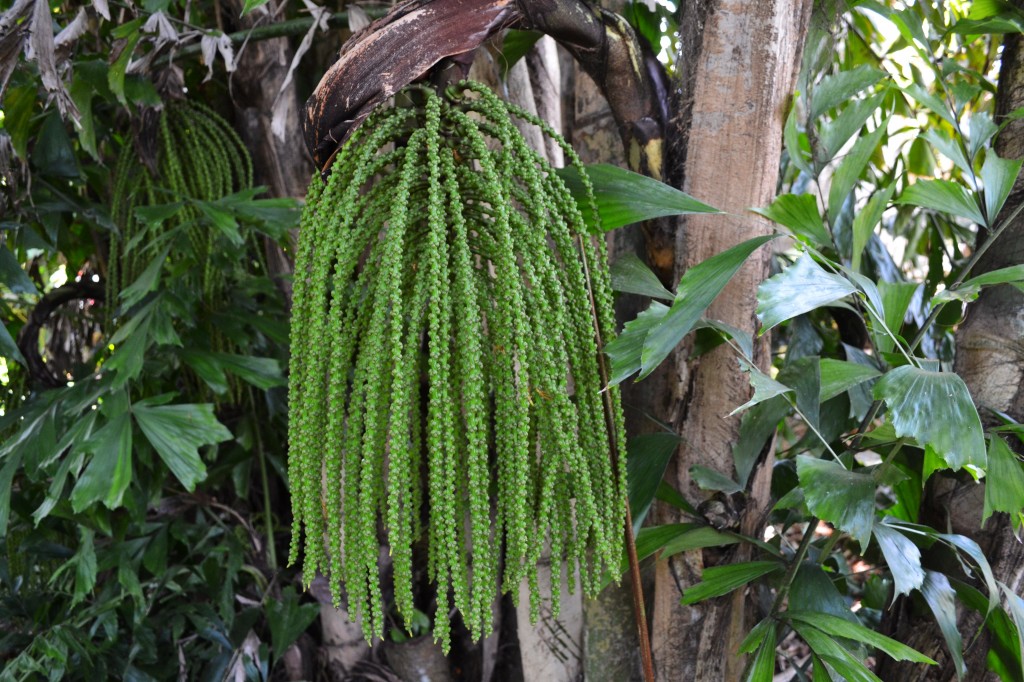Fishtail Palms
Caryota spp.
Plant Family: Palmae
Leaves: Palmate, but twice-compound, unlike all other palm species. The leaflets on each segment are shaped like the tail of a fish.
Bark: The trunks may be solitary or multiple, depending on the species, and are often covered with dark matting and old leaf bases.
Flowers: Small, white, in long, drooping clusters in the spring.
Fruits: Rounded, green, ripening to black, from 1 to 2 cm, depending on the species, typically held in long drooping clusters in summer to fall.
Habitat: Planted throughout south Florida, Fishtail Palms may naturalize.
Growth Form: Small to medium-sized trees.
Key Feature: The compound leaves with the distinctive leaflet shape are unique, allowing placement of any particular specimen of Fishtail Palm within the genus Caryota.
Comments: The Fishtail Palms are native to Asia and the East Indies and comprise as many as twelve species, several of which are grown in south Florida.


